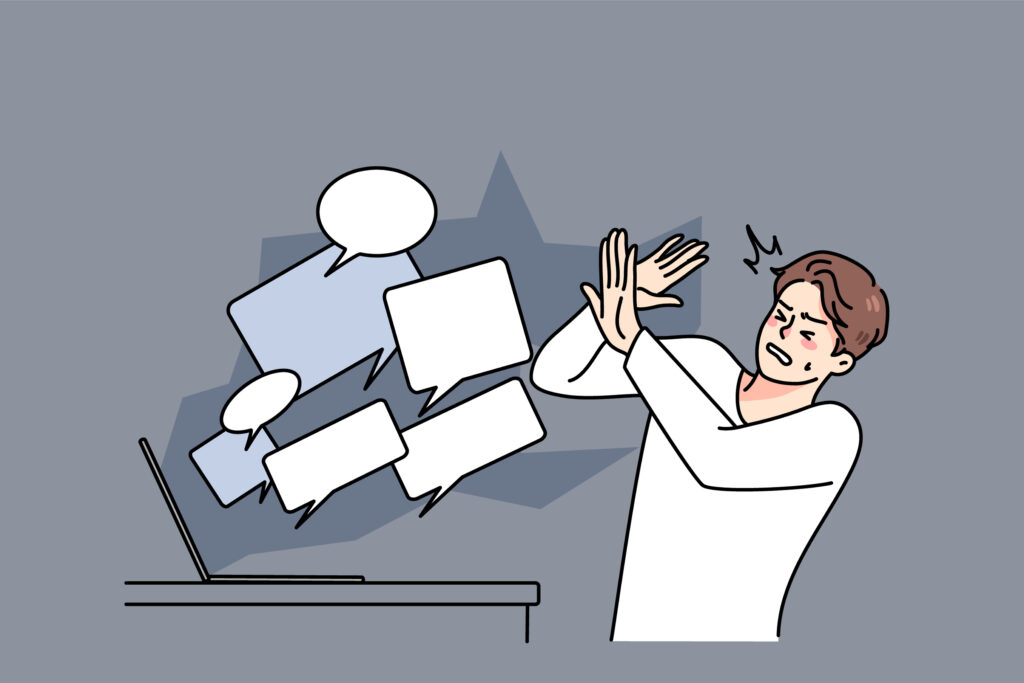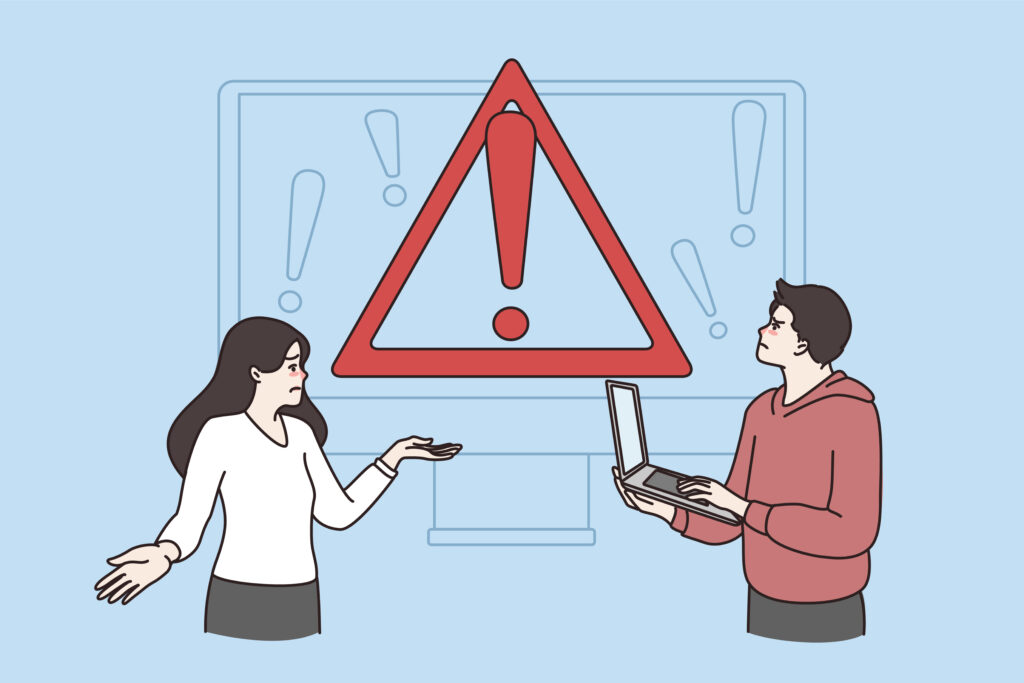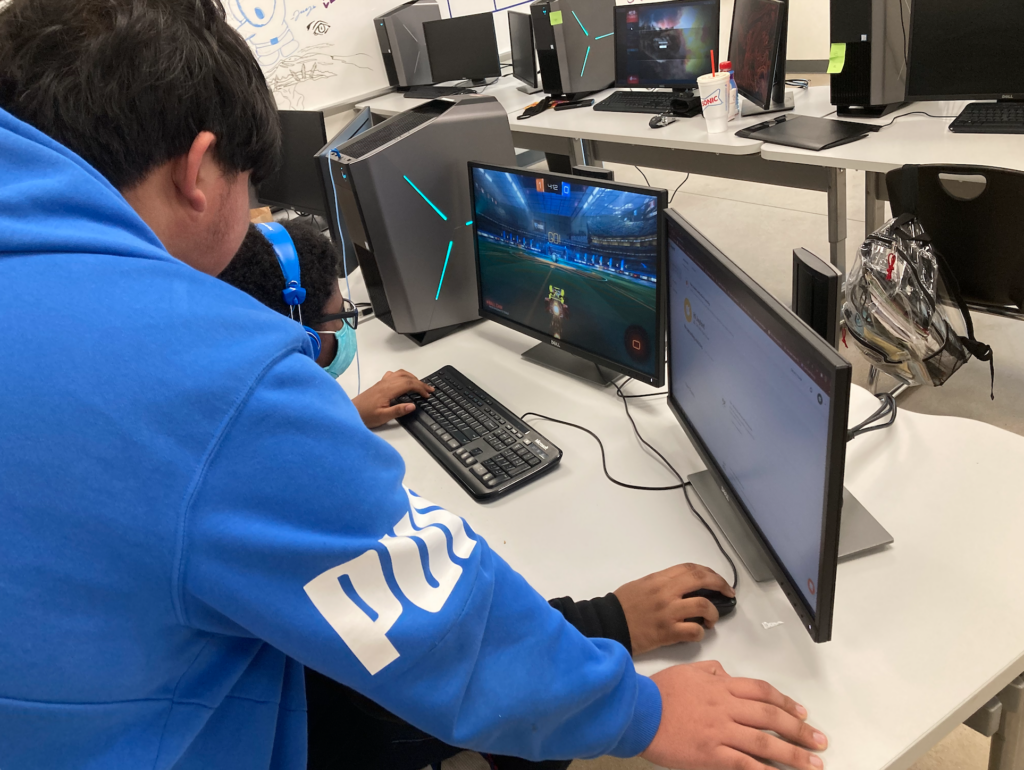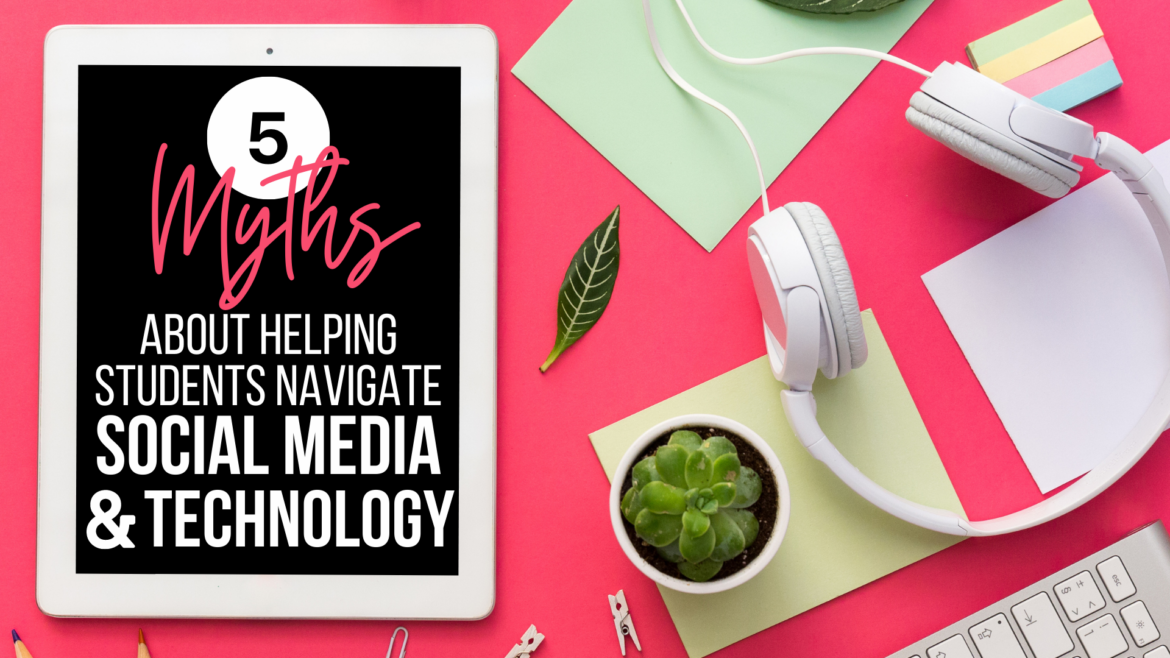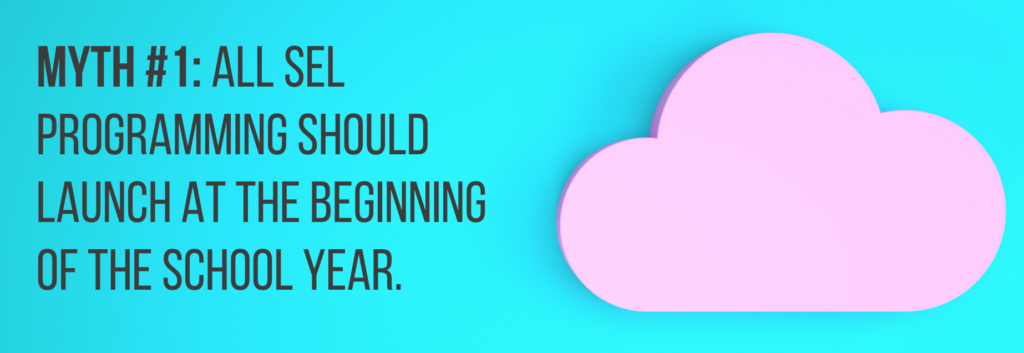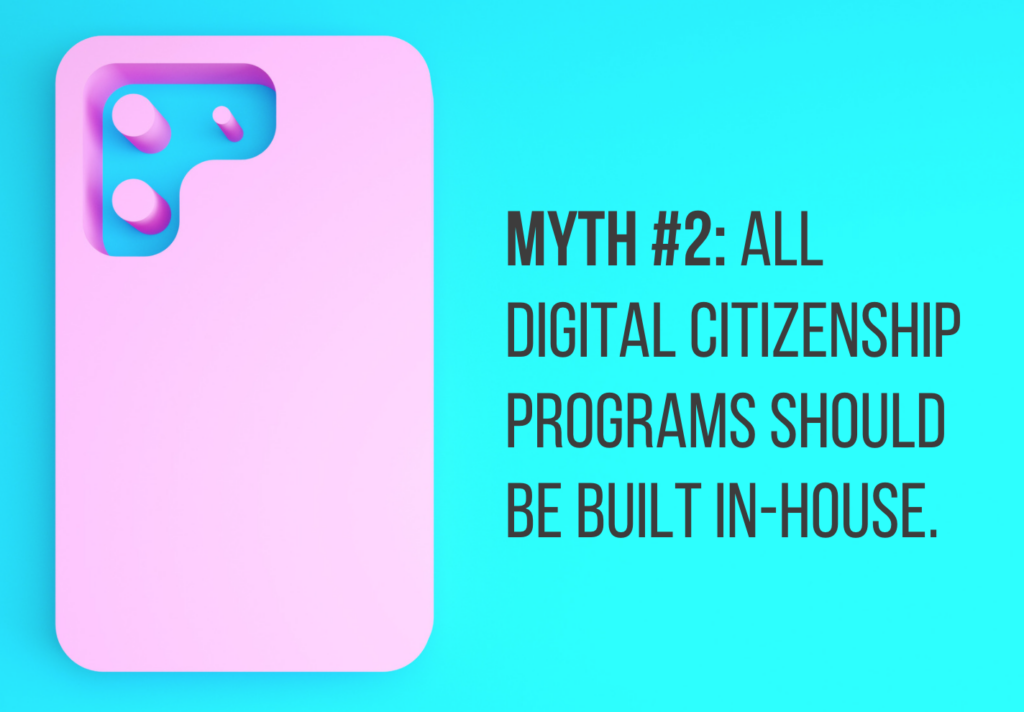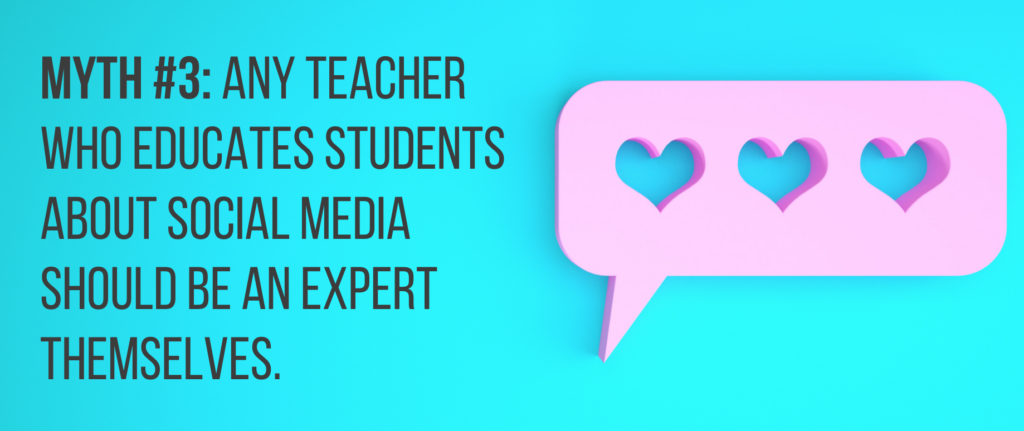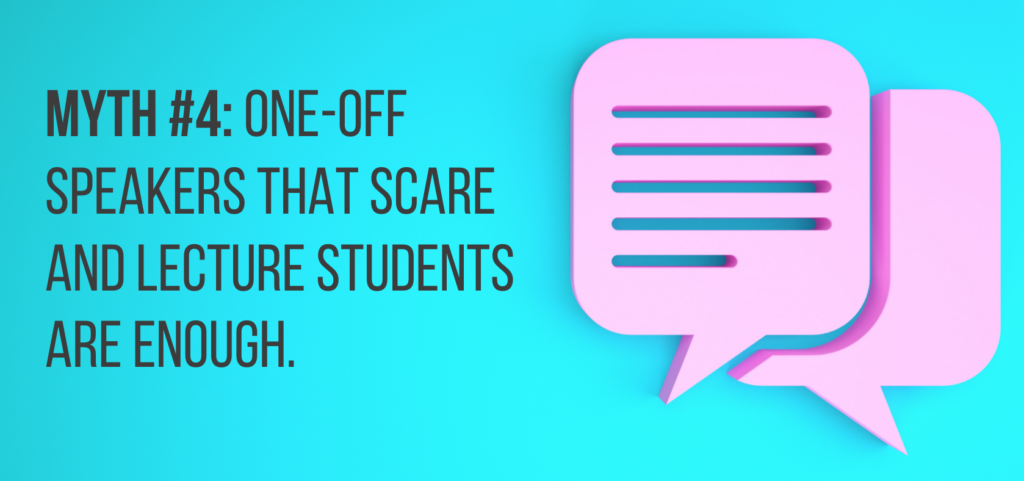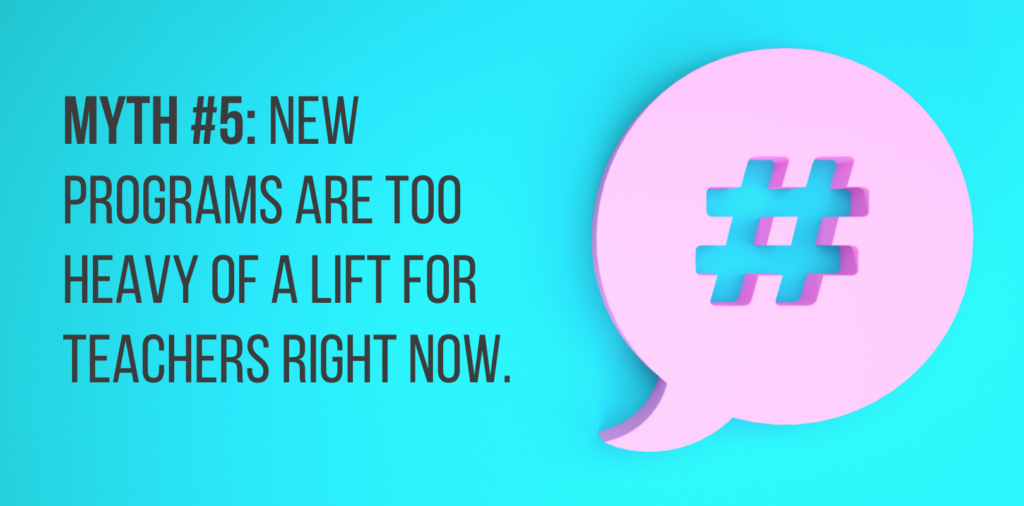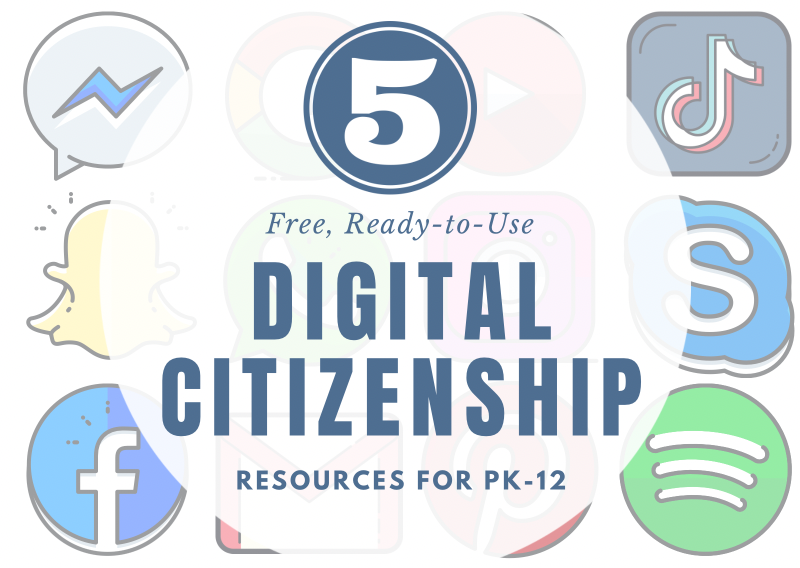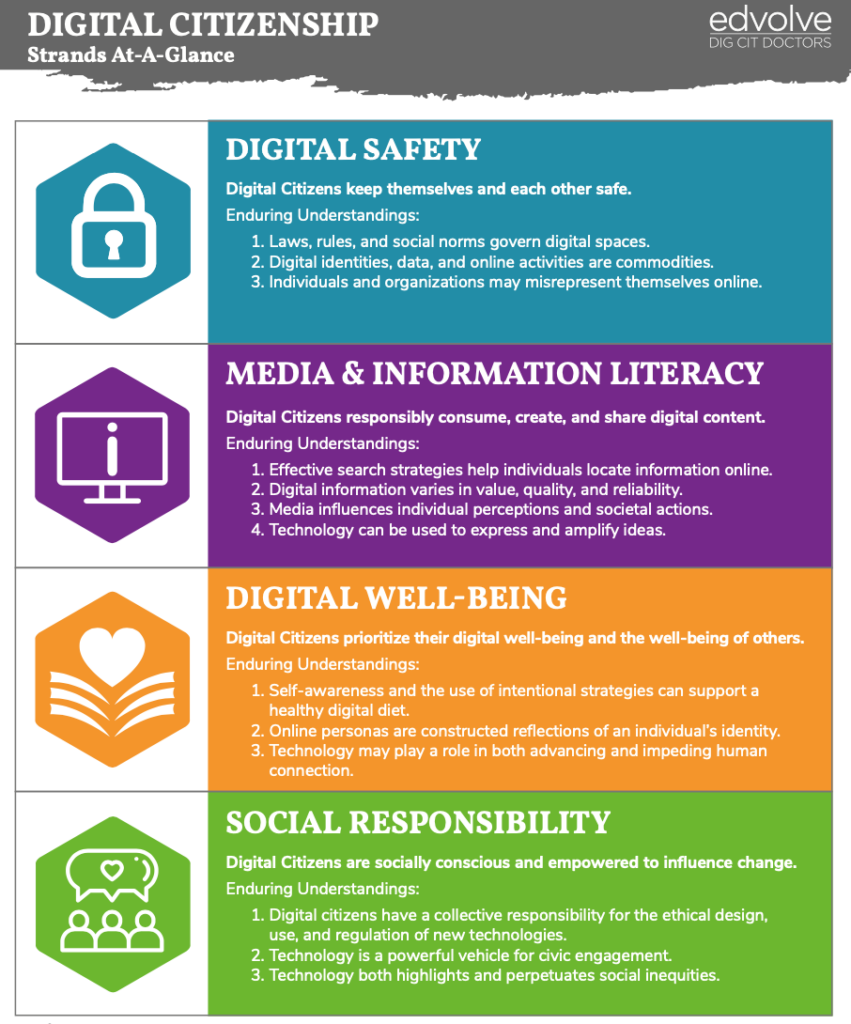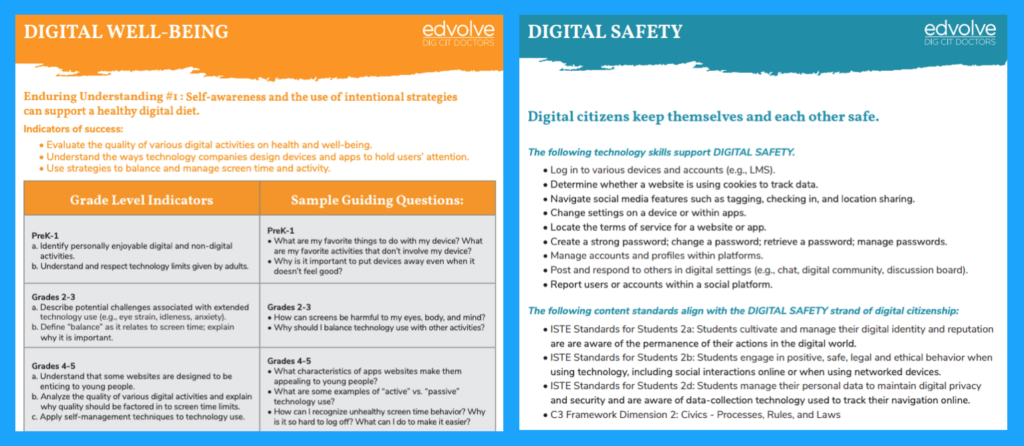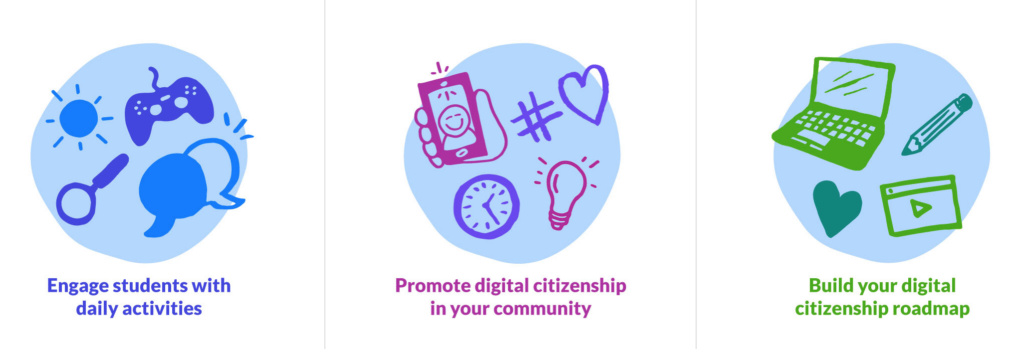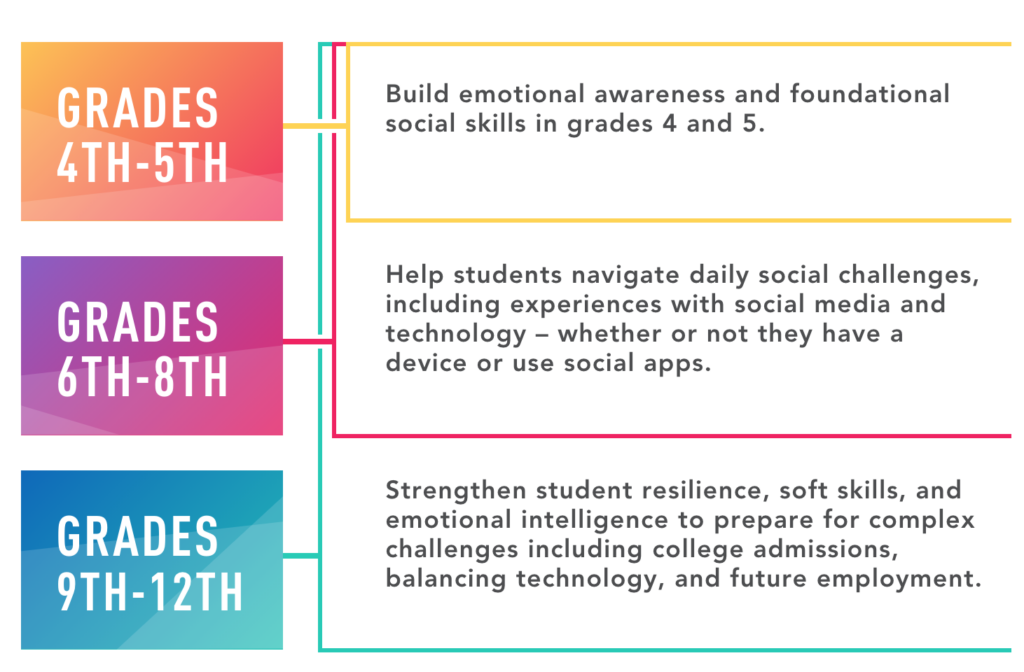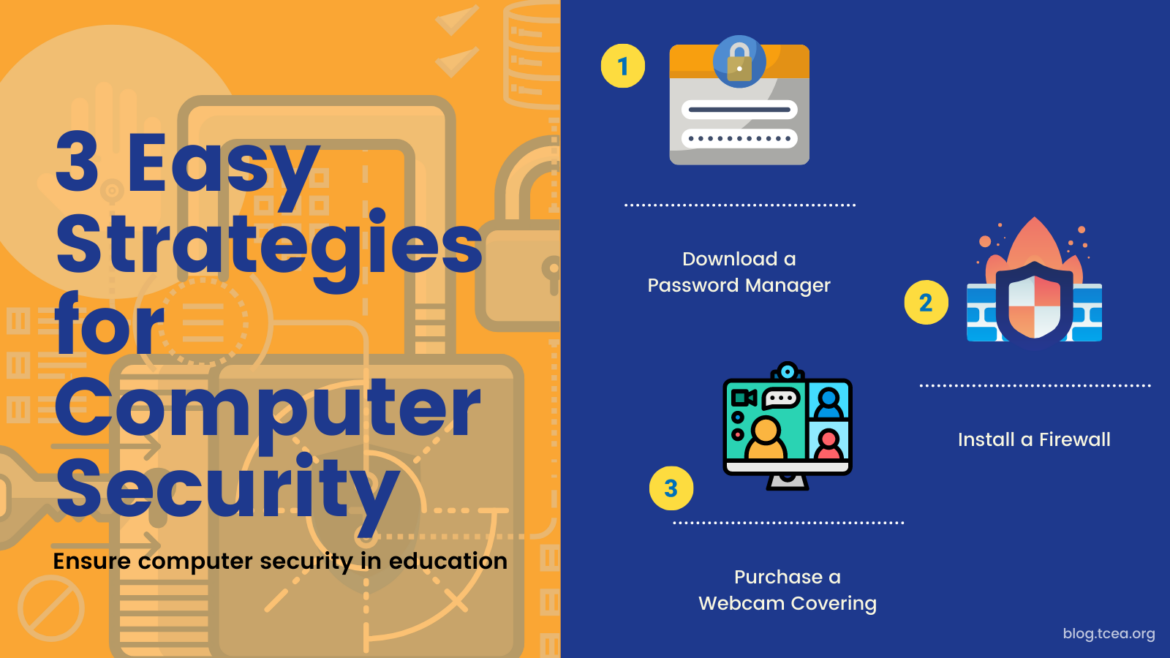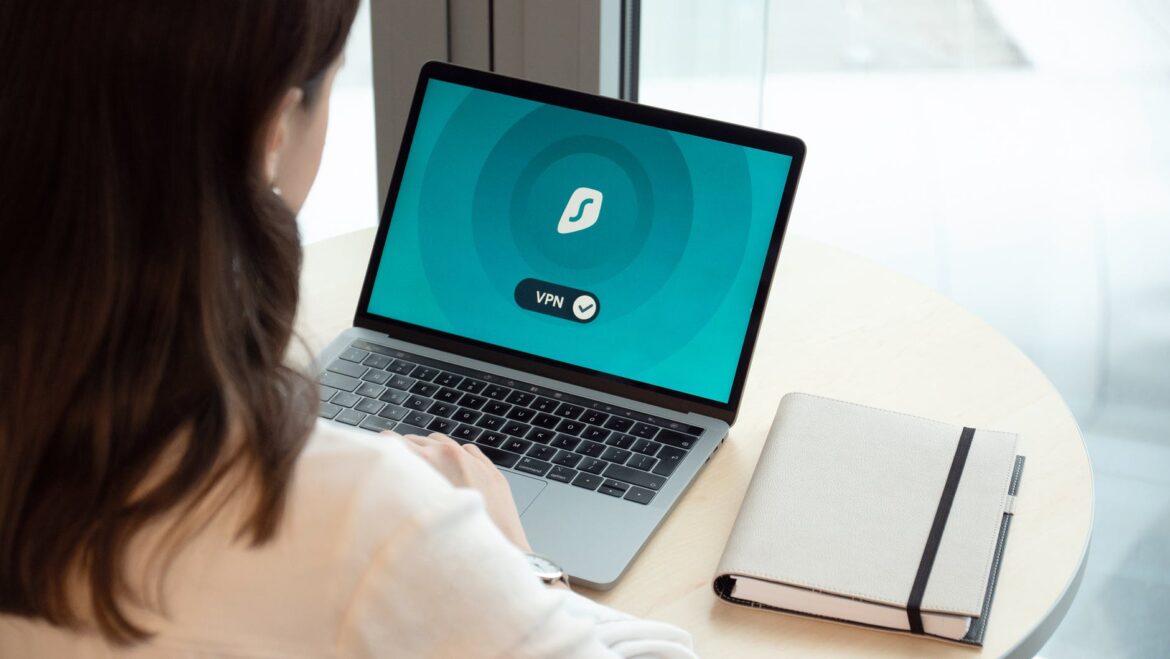As an educator, I want our learners to recognize the power of technology and its potential to cultivate world leaders who will leave meaningful impacts on our society. In order for this to be achieved, we must provide students with the knowledge and skills to engage in digital environments safely, responsibly, and with confidence. In a recent TechNotes post titled “Where Do We Go From Here?”, Luann Hughes charges all of us to take action to “correct the problems that unsafe online access is creating for our students.” So, where do we begin? We must offer up opportunities for students to be digital leaders.
Ask the Students
“Always ask the students first.” I have this simple sentence written on a sticky note posted prominently on my computer screen. I look to it as a daily reminder of how critical it is to involve students, our most important stakeholders, in all that we do. When I reflect on my most successful lessons, projects, and programs, they all have included student input or feedback. In the instances where I failed to include students, the results were far less favorable.
Students serve as leaders in their schools in a number of ways. From involvement in student organizations to athletics to fine arts, students assume leadership roles in a variety of ways and create lasting, positive impressions on staff and their peers alike. If students have the ability to lead in these ways, why would we not ask them to use their skills and talents to promote digital literacy and citizenship?
Two Ways to Promote Student Leadership
As a parent and educator, I believe I have done a good job in communicating how to safely and responsibly live, learn, and work in our technology-rich world. The truth is, regardless of my efforts, my students and my children will far surpass my efforts, because as digital natives who have been immersed in technology since birth, they have a unique perspective that I, and most current educators, do not have.
Rather than waiting for our students to become parents and educators, how might we empower them to lead learning now? Here are two ways you can involve students in promoting digital literacy and citizenship.
- Create a club or an elective class with the purpose of learning about digital literacy and citizenship and educating the student body in these areas.
- Form a student advisory committee to help the campus make informed decisions and to weigh in on the school’s strategic planning.
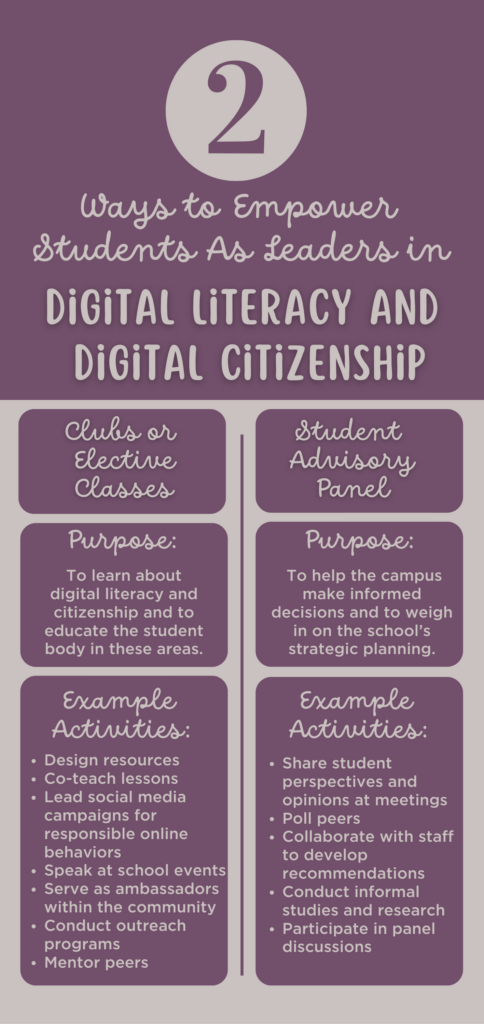
What Can These Student Groups Do?
Before establishing a class, club, or committee, it is important to set goals for the students’ involvement. Here are examples of the activities these student groups can take on.
Clubs and Classes may be leveraged to:
- Design digital citizenship and literacy resources for peers, teachers, and parents
- Co-teach lessons with teachers, counselors, and librarians
- Lead social media campaigns for responsible online behaviors
- Speak to peers at school assemblies and other functions
- Serve as school ambassadors at community events
- Conduct outreach programs at other campuses within your district
- Mentor their peers
Advisory Committees may be leveraged to:
- Share student perspectives and opinions at meetings
- Poll peers
- Collaborate with staff to develop recommendations
- Conduct informal studies and research
- Participate in panel discussions
Six Tips for Getting Started
Regardless of whether you are forming a club or organizing a committee, launching any program can be challenging. Here are a few suggestions to help you get off to a strong start.

1. Start Small
Begin with a single class or a club with a limited number of students. Consider forming a student version of an existing committee. For example, if you have a teacher technology advisory committee, you might launch a student technology advisory committee as a companion.
2. Build on What You Know
What are some challenges students in your school are having? Leverage the club, class, or committee to address these needs first.
3. Maximize Students’ Existing Talents
Do the students involved enjoy public speaking, designing publications, or posting on social media? Maximize these existing skills within the scope of your student leadership groups.
4. Begin by Curating Rather than Creating
Rather than having students design their own publications at the start, teach them how to responsibly source, curate, and share existing publications that are relevant to the group’s mission and the staff and student body.
5. Plan for Training
This will likely be a new experience for students. Prioritize time for training the students on skills and content. Time spent up front to do this will help ensure that students feel confident in their roles and the quality of their work will be stronger.
6. Leverage Community Support
Which businesses or community organizations have visions that align with your student group’s goals? Partner with them for support. They may have resources, training, facilities, equipment, and funding that they are willing to share in this partnership.
The Benefits
Starting any new program can be daunting and time consuming. However, the benefits are abundant. Aside from empowering students to engage with technology safely, responsibly, and with confidence, student-led digital literacy and citizenship programs open doors to:
- Partnerships with corporations and community organizations
- Increased technology support capacity
- Visibility by State and local leaders
- Just-in-time digital learning
- A comprehensive technology support system
- Meaningful experiences for students that translate to post-secondary education and the workforce
- Excitement for and innovation in learning
Beginning this school year, I am commiting to empowering students to lead learning in digital literacy and citizenship. I hope you’ll join me and start something great at your school!



